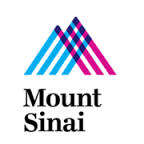Lung Ultrasound to Diagnose Transient Tachypnea of the Newborn (TTN) Versus Respiratory Distress Syndrome (RDS) in Neonates
| Status: | Completed |
|---|---|
| Conditions: | Hospital, Pulmonary |
| Therapuetic Areas: | Pulmonary / Respiratory Diseases, Other |
| Healthy: | No |
| Age Range: | Any |
| Updated: | 4/21/2016 |
| Start Date: | October 2011 |
| End Date: | June 2013 |
The Use of Lung Ultrasound to Diagnose RDS vs. TTN in Neonates Greater Than or Equal to 28 Weeks Gestation
The investigators hypothesize that ultrasonography of the newborn lung can be used as an
effective diagnostic tool in neonates ≥ 28 weeks gestation with early symptoms of
respiratory distress.
effective diagnostic tool in neonates ≥ 28 weeks gestation with early symptoms of
respiratory distress.
Respiratory distress is a common reason for admission to the neonatal intensive care unit
(NICU) for both preterm and full term newborns. TTN and RDS are the two most common
diagnoses associated with respiratory distress. Due to their similar clinical presentations,
it is often difficult to differentiate the two diseases clinically. Currently chest
radiography is used to differentiate between TTN and RDS, however, radiographic findings are
not always definitively diagnostic.
In preliminary studies, lung ultrasonography has been shown to be a useful tool in
diagnosing both TTN and RDS. However, no one has looked at the use of lung ultrasonography
in differentiating TTN from RDS in the neonatal population. We propose to do so in this
study.
Patients will be enrolled from neonatal admissions to the NICU with respiratory distress.
Lung ultrasound will be performed on all enrolled subjects, looking for specific findings
suggestive of either TTN or RDS. Data will be collected on gestational age, physical exam
findings and level of respiratory support. Diagnoses will be recorded based on ultrasound
findings. Accuracy of lung ultrasound diagnosis will be compared to that using radiographic
chest radiography findings to evaluate if lung ultrasound is equivalent, or better than
chest radiography in order to diagnose TTN versus RDS in this patient population.
(NICU) for both preterm and full term newborns. TTN and RDS are the two most common
diagnoses associated with respiratory distress. Due to their similar clinical presentations,
it is often difficult to differentiate the two diseases clinically. Currently chest
radiography is used to differentiate between TTN and RDS, however, radiographic findings are
not always definitively diagnostic.
In preliminary studies, lung ultrasonography has been shown to be a useful tool in
diagnosing both TTN and RDS. However, no one has looked at the use of lung ultrasonography
in differentiating TTN from RDS in the neonatal population. We propose to do so in this
study.
Patients will be enrolled from neonatal admissions to the NICU with respiratory distress.
Lung ultrasound will be performed on all enrolled subjects, looking for specific findings
suggestive of either TTN or RDS. Data will be collected on gestational age, physical exam
findings and level of respiratory support. Diagnoses will be recorded based on ultrasound
findings. Accuracy of lung ultrasound diagnosis will be compared to that using radiographic
chest radiography findings to evaluate if lung ultrasound is equivalent, or better than
chest radiography in order to diagnose TTN versus RDS in this patient population.
Inclusion Criteria:
- gestational age ≥ 28 weeks
- symptoms of respiratory distress defined as:
- tachypnea (respiratory rate > 60 breaths per minute)
- FiO2 requirement >21%
- intercostal/subcostal retractions
- grunting and/or nasal flaring
- If clinically warranted, a chest x-ray will be done as part of the workup for
respiratory distress; these patients with CXR will be included in the study.
- Inclusion criteria for the control group will be gestational age ≥ 28 weeks with no
symptoms of respiratory distress (defined above).
Exclusion Criteria:
- neonates with prenatally diagnosed structural cardiac disease
- major multiple congenital anomalies
- other causes of respiratory distress that are not RDS or TTN (e.g. pneumothorax, CCAM
or pneumonia).
We found this trial at
1
site
Icahn School of Medicine at Mount Sinai Icahn School of Medicine at Mount Sinai is...
Click here to add this to my saved trials
